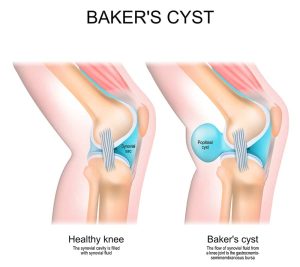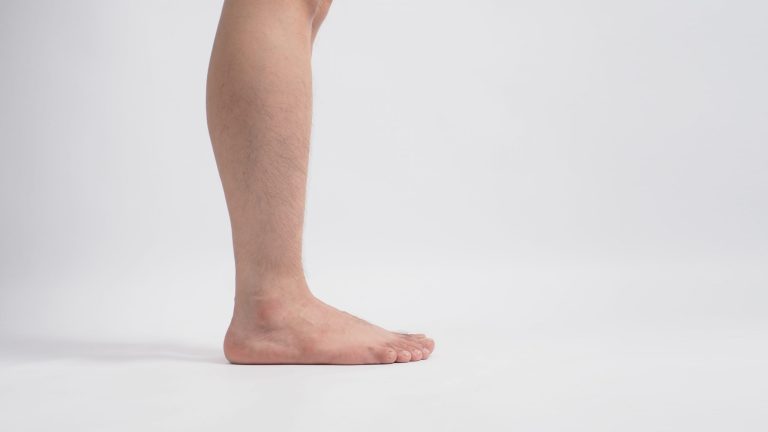

Flat feet, also known as fallen arches, is a common condition where the medial longitudinal arch of the foot collapses, causing the entire sole to make contact with the ground. While many children are born with flat feet, most develop visible arches by the age of 3. In some cases, flat feet can persist into adulthood, leading to foot pain, discomfort, and difficulty with walking. Women are more likely to experience flat feet than men, particularly as they age.
At York-Med Physiotherapy & Wellness Centre, we specialize in providing evidence-based treatments to help individuals manage the pain and complications associated with flat feet. Our registered physiotherapists design personalized treatment plans to relieve discomfort, improve foot function, and prevent future injury.
Flat feet occur when the arch of the foot fails to develop or collapses over time, causing the entire foot to touch the ground when standing. This can lead to uneven weight distribution, which in turn may cause pain and discomfort in the feet, ankles, knees, or lower back. In many cases, flat feet are asymptomatic and do not require medical treatment. However, for some individuals, flat feet can cause significant pain and discomfort.
Symptoms of Flat Feet
Some individuals with flat feet may experience the following symptoms:
Foot pain: Caused by strained muscles and connective tissues.
Ankle misalignment: Inward-turning ankles or excessive inward rolling of the feet (pronation).
Stiffness: In one or both arches of the feet, limiting mobility.
Uneven wear on shoes: Resulting from an uneven distribution of body weight.
Difficulty walking: Due to instability or discomfort while standing or walking.
Pain in the lower back or knees: Caused by misalignment in the foot structure that affects overall posture.
Risk Factors for Developing Flat Feet
Several factors increase the likelihood of developing flat feet, including:
Obesity and Diabetes: Both can contribute to weak arches and increased stress on the feet.
Foot and ankle injuries: Conditions like posterior tibial tendon dysfunction can cause flat feet.
Genetic factors: Certain congenital conditions, such as Down syndrome and Marfan syndrome, increase the risk of developing flat feet.
Pregnancy: Hormonal changes and weight gain during pregnancy may lead to flat feet.
Arthritis and other medical conditions: Conditions like spina bifida, cerebral palsy, and muscular dystrophy may contribute to foot deformities and flat feet.
Physiotherapy Management for Flat Feet
At York-Med Physiotherapy & Wellness Centre, our physiotherapists provide comprehensive care to help manage flat feet, with a focus on pain relief, improved mobility, and long-term prevention of injury. Our personalized treatment approach includes a combination of strengthening, flexibility exercises, and manual therapy techniques, along with the use of foot orthotics to support proper foot function.
Pain relief is an essential aspect of managing flat feet. Our physiotherapists may utilize various techniques to help reduce discomfort, including:
Activity modification: Avoiding high-impact activities that exacerbate pain.
Thermotherapy: Applying heat or cold to reduce pain and swelling.
Massage: Targeting tight muscles and soft tissues to improve circulation and relieve tension.
Electrical Stimulation: Enhancing circulation and promoting healing by stimulating the muscles, reducing pain and swelling.
Incorporating stretching exercises into your rehabilitation plan is crucial for improving flexibility and reducing tightness in the Achilles tendon, gastrocnemius, soleus, and peroneus brevis muscles. Our physiotherapists will guide you through passive range-of-motion (ROM) exercises to improve foot and ankle mobility, enhancing foot function and alleviating pain.
Strengthening the muscles around the foot and ankle is vital for supporting the arch and preventing further collapse. Targeted exercises aim to strengthen the tibialis posterior, peroneal muscles, and other foot stabilizers, improving foot alignment and reducing the risk of further damage.
Custom foot orthotics, including shoe inserts, are often used to provide support to the arch and improve foot biomechanics. These orthotics can help reduce strain on the foot and prevent the arch from collapsing. Our team of physiotherapists and chiropodists work together to design customized orthotics tailored to your specific needs, ensuring optimal support and comfort.
At York-Med Physiotherapy & Wellness Centre, we offer holistic and personalized care to individuals suffering from flat feet. Our experienced physiotherapists utilize evidence-based practices to provide effective treatments that address your symptoms and improve foot function.
Comprehensive Assessments: We take a thorough approach to understanding your condition through detailed assessments, including posture and gait analysis.
Customized Treatment Plans: Each treatment plan is tailored to your unique condition, ensuring optimal results.
Multi-disciplinary Care: Our team includes registered physiotherapists and chiropodists, who collaborate to offer the best solutions for your foot health.
Convenient Location: Easily accessible for residents of Richmond Hill and surrounding areas, providing a comfortable and supportive environment for recovery.
If you’re experiencing foot pain or discomfort from flat feet, York-Med Physiotherapy & Wellness Centre can help. Contact us today to schedule a consultation with one of our registered physiotherapists and start your journey towards pain relief and improved mobility.
Call now or book online for an appointment, and take the first step in restoring your foot health!
© 2020 York-Med Physiotherapy and wellness center | Richmond Hill & Vaughan. All Rights Reserved.
Designed by Magham Agency